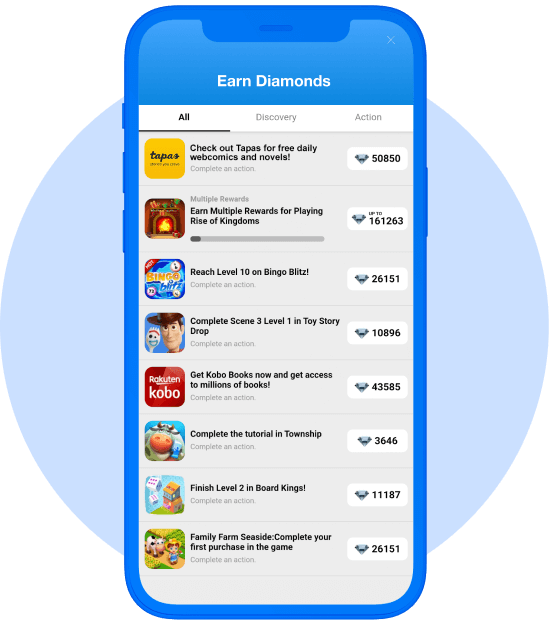As mobile app development continues to evolve, monetizing apps effectively is crucial to maximizing revenue. In 2024, homeowners represent a growing market segment that app developers can target with precision. If your app caters to homeowners—whether it’s for home improvement, real estate, or smart home technologies—you can tap into this lucrative demographic by using the Top Mobile App Monetization Platforms. In this blog, we’ll dive into the best platforms and strategies to help app developers boost revenue while providing homeowners with valuable experiences.
Why Monetization Matters for Homeowner-Centric Apps
The global market for mobile apps continues to grow, and homeowners increasingly use apps for managing tasks like remodeling, maintenance, and home buying. Developers who create apps for homeowners must strike a balance between user experience and revenue generation. Effective monetization ensures that developers can continuously improve their apps while offering free or affordable access to users.
Homeowners often look for functional apps that can help them save time, manage their homes better, and streamline household processes. This makes it crucial to employ monetization strategies that are relevant, user-friendly, and non-intrusive.
Top Mobile App Monetization Platforms in 2024
1. Google AdMob
Google AdMob continues to be one of the most popular mobile app monetization platforms. Its extensive reach, easy integration, and support for various ad formats make it a go-to option for developers looking to monetize apps geared toward homeowners.
Key Features:
- Banner Ads: Ideal for apps that want to subtly display ads without disrupting the user experience. For example, a home improvement app could display relevant banner ads from hardware stores or services.
- Native Ads: These blend seamlessly into the app’s design, making them more appealing and less intrusive to homeowners.
- Interstitial Ads: Displayed at natural breaks or transitions, these can work well in apps like home design games or DIY project planners.
With AdMob, you can also leverage Google’s extensive targeting capabilities to reach specific homeowner demographics based on interests, location, and browsing behavior.
Best For: Apps targeting a broad spectrum of homeowners with varying needs, from home maintenance to real estate.
2. AppLovin
AppLovin offers a robust monetization suite designed for developers aiming to maximize user engagement and revenue. With an emphasis on in-app advertising, AppLovin’s solutions are ideal for homeowner-centric apps that provide immersive experiences.
Key Features:
- Video Ads: Highly engaging and often non-skippable, video ads can showcase home-related products or services, such as smart home devices or home security systems.
- Incentivized Ads: Perfect for apps that offer rewards to users for watching ads, such as a discount on a service or product.
- App Recommendations: This feature helps app developers promote other homeowner-related apps, such as real estate search tools or home decor apps.
AppLovin’s advanced AI algorithms ensure that users are shown highly relevant ads, increasing the likelihood of engagement and conversion.
Best For: Apps that have a strong focus on visual content, such as home design or virtual staging apps.
3. IronSource
IronSource specializes in monetization for gaming apps but has expanded to serve a variety of other app categories, including those targeting homeowners. The platform offers a wide range of ad formats that developers can use to enhance their apps.
Key Features:
- Offerwalls: These allow users to earn rewards by completing specific tasks, such as signing up for a home maintenance service or purchasing a product.
- Rewarded Video Ads: These provide an excellent opportunity to monetize without disrupting the user experience, offering homeowners incentives like discounts on home services.
- Advanced Mediation: IronSource’s mediation platform allows developers to maximize revenue by working with multiple ad networks simultaneously, ensuring the highest possible returns.
IronSource’s focus on user-friendly ad formats makes it an excellent choice for apps that target homeowners who may be using the app for functional, everyday tasks.
Best For: Apps that engage users frequently and offer incentives, such as home improvement tracking apps.
4. Unity Ads
While Unity Ads is primarily known for its role in mobile gaming, it has increasingly found success in other app categories, including homeowner-focused apps. Unity’s ad formats can easily be integrated into apps that are immersive, visually driven, or interactive.
Key Features:
- Playable Ads: These interactive ads allow users to try out services or products before making a commitment, which is useful for homeowners considering home decor items or smart home systems.
- Rewarded Ads: Similar to IronSource, Unity allows users to earn rewards for engaging with ads, making it a perfect fit for homeowner apps that incentivize behavior, like home renovation or maintenance trackers.
Unity’s advanced analytics provide developers with detailed insights into user behavior, helping them optimize ad performance and increase revenue over time.
Best For: Apps that feature visually rich content or immersive experiences, like virtual home tours or augmented reality (AR) home design apps.
How to Maximize Revenue with Mobile App Monetization
To maximize your app’s revenue in 2024, consider implementing a multi-channel strategy. This means using several ad formats and monetization platforms to diversify income streams. Here are a few tips for optimizing your app’s revenue:
1. Use Rewarded Ads
Rewarded ads are one of the least intrusive monetization strategies. Homeowners are more likely to watch an ad if they receive something in return, such as a discount on a home service or an additional feature in your app.
2. Leverage Targeting
Platforms like Google AdMob and Facebook Audience Network offer advanced targeting features that allow you to reach homeowners based on their interests, behaviors, and location. Use these tools to ensure that your ads are relevant, increasing the likelihood of engagement.
3. Diversify Your Ad Formats
A mix of banner ads, video ads, and offerwalls will ensure that you’re reaching your audience in different ways. For example, offerwalls may appeal to users looking for discounts on home-related services, while video ads can introduce them to new products.
4. Optimize for User Experience
While monetization is essential, your app’s user experience should remain a top priority. Avoid overwhelming homeowners with too many ads, and ensure that the ads you do show are relevant to their needs.
Common Mistakes to Avoid
- Overloading with Ads: Too many ads can drive users away. Ensure you strike a balance between revenue generation and maintaining a positive user experience.
- Ignoring Analytics: Use analytics tools to track how well your monetization efforts are performing. Platforms like Unity and IronSource offer detailed insights to help you optimize ad placements.
- Choosing Irrelevant Ad Networks: Ensure that the ad networks and formats you use are relevant to your audience. Homeowners are more likely to engage with ads that address their specific needs and interests.
Conclusion
Monetizing mobile apps in 2024 is all about providing value while maximizing revenue. With the right mix of the Top Mobile App Monetization Platforms, you can tap into the homeowner market and boost your app’s earning potential. Keep user experience at the forefront of your strategy, and don’t hesitate to experiment with different ad formats and platforms to find the best fit for your app.



